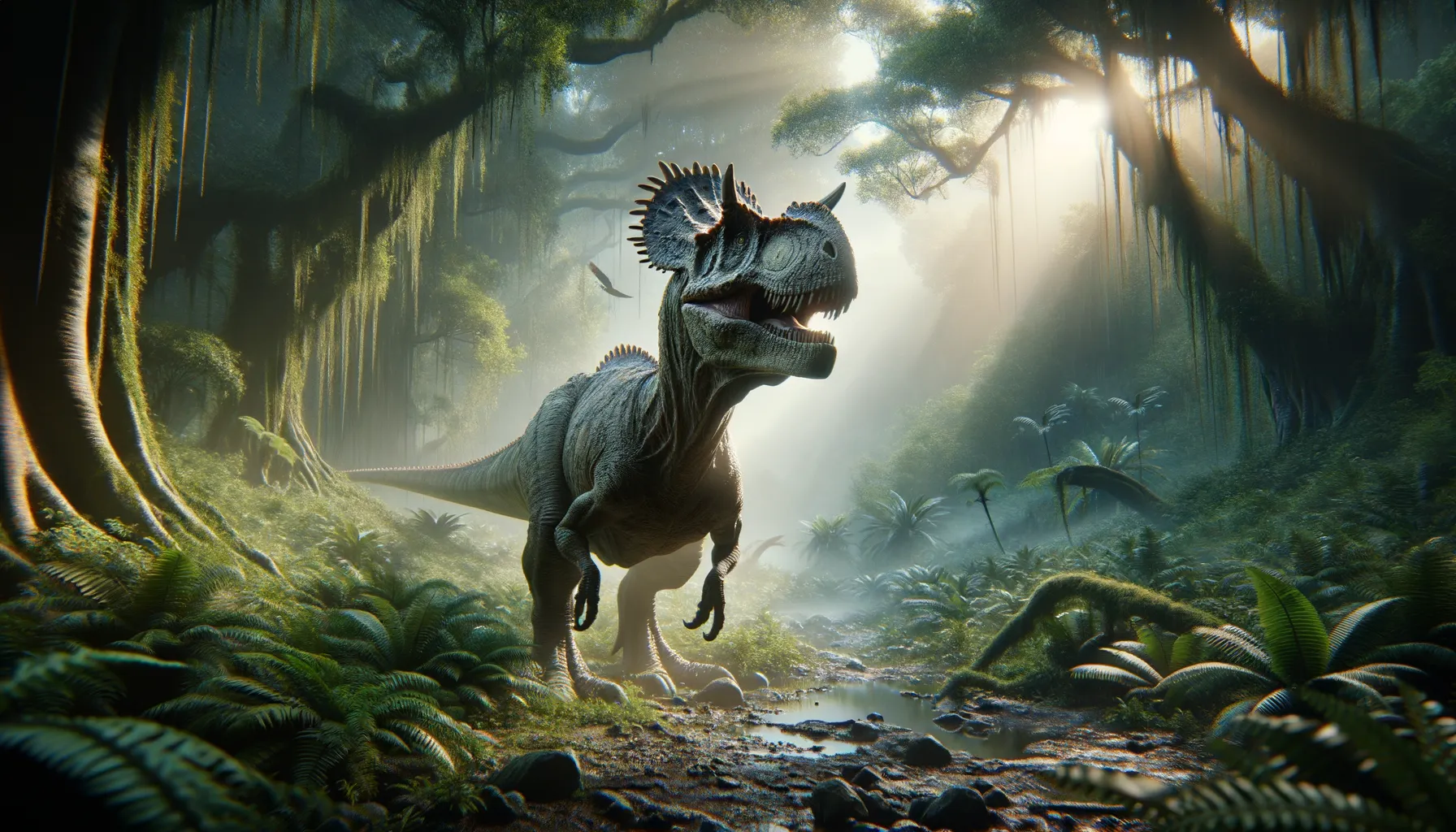
Aucasaurus
Untamed predator of the Cretaceous wilds.
Period
Cretaceous
Length
Roughly 20 feet long.
Height
About 8 feet tall at the hips.
Weight
Approximately 1.5 tons.
Aucasaurus was a two-legged, carnivorous dinosaur that roamed South America during the Late Cretaceous period. Known for its relatively short arms and a distinctive bony crest above each eye, Aucasaurus belonged to the Abelisauridae family. These features suggest it was well-adapted to its environment, with evolutionary traits suited for hunting and survival. Its fossils offer insights into its anatomy and interactions with its ecosystem.
Diet
Aucasaurus was a carnivore, primarily feeding on other dinosaurs. It likely preyed on herbivorous species within its ecosystem, using its agility and sharp teeth to capture its meals.
Hunting
Aucasaurus likely used stealth and speed to approach its prey, relying on quick sprints to catch its target. Its strong jaws and teeth were essential tools for taking down and consuming other creatures.
Environmental challenges
During its time, Aucasaurus faced environmental changes that might have included fluctuating climates and shifting terrains. These challenges required adaptability in finding resources and shelter. Competition from other predators and the natural barriers of its terrain likely influenced its behavior and movements.
Speed
Moderately fast, capable of short bursts.
Lifespan
Estimated around 20 years.
First discovery
Found in the Neuquén Province, Argentina, in 1999.
Fun Facts
- Aucasaurus was a medium-sized carnivorous dinosaur that lived about 85 million years ago in what is now Argentina.
- Its name means 'Auca lizard,' named after the Auca Mahuevo region where its fossils were first discovered.
- Unlike many other predatory dinosaurs, Aucasaurus had unusually short arms, even shorter than those of Tyrannosaurus rex.
- The Aucasaurus is believed to have been a fast runner, using its powerful legs to chase down prey in the prehistoric landscapes.
- Fossils suggest that Aucasaurus had a reduced number of fingers, making its hands appear almost clawless.
- Aucasaurus is known from a remarkably well-preserved skeleton, providing researchers with valuable insights into its anatomy and lifestyle.
Growth and Development
Aucasaurus, like other theropods, possibly grew rapidly after hatching to ensure survival against predators. Its development involved transitioning from a juvenile into a capable hunter. As it matured, its physical features became more pronounced, aiding in its effectiveness as a predator.
Habitat
Aucasaurus inhabited the semi-arid regions of what is now South America, primarily within areas that were rich in diverse life forms. Its habitat included open landscapes where it could roam freely in search of prey. It likely took advantage of both open spaces for hunting and the cover of vegetation when stalking potential prey.
Interaction with other species
This dinosaur likely encountered various herbivorous species, which constituted its diet. Its interactions also included competition with other carnivores over territory and hunting grounds. Aucasaurus' dominance in its ecosystem was essential for its survival and reproduction.
Natural lifespan
Aucasaurus likely lived up to around 20 years in the wild.
Reproduction
As a dinosaur, Aucasaurus reproduced via eggs, likely laying them in nests on the ground. It is possible that the dinosaur engaged in some form of parental care, at least until the young were capable of fending for themselves.
Social behaviour
Little is known about its social behavior, but as a predator, Aucasaurus might have been a solitary hunter. However, it could have exhibited some social interactions during mating or in regions with abundant food resources.
Fossil locations
Fossils of Aucasaurus have been discovered in the Neuquén Province in Argentina, specifically in the Río Colorado Formation. These findings have provided substantial insight into the anatomy and lifestyle of this fascinating dinosaur.
